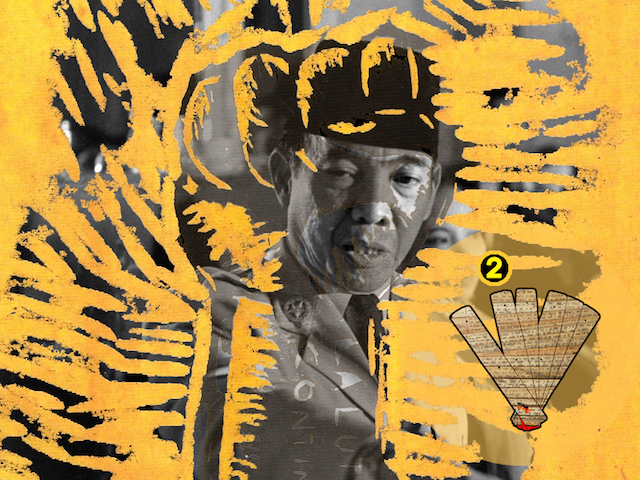Celebrate Women in Translation month by reading the work of under-translated women writers.
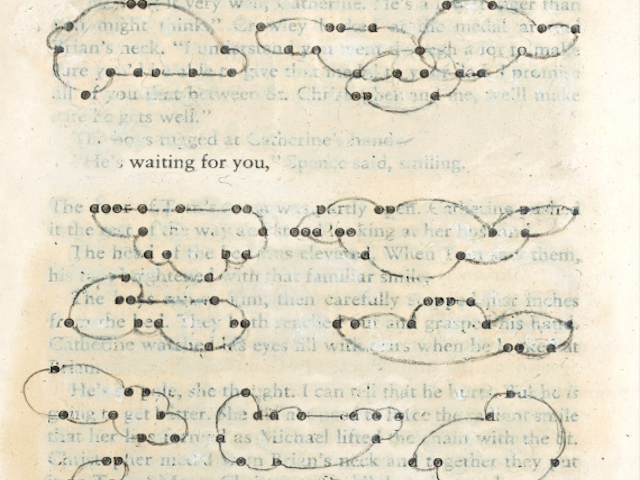
August 23, 2018
First established in 2014 by Meytal Radzinski, Women in Translation month is a young initiative, but one that addresses years and years of disparity between the number of published translations of women and male writers. Taking place throughout the month of August, the goals of Women in Translation month are simple: to increase discussion about women writers in translation and to read more of their work. In celebration, we reached out to six women translators—Bonnie Chau, Muna Gurung, Jennifer Hayashida, Bonnie Huie, Meena Kandasamy, and Emma Ramadan—and asked them to write about their dream translation projects by women writers. From the self-destructive short story writer Barbara Molinard to proto-feminist Toshiko Tamura, here are the under-translated women.
“Re-vision—the act of looking back, of seeing with fresh eyes, of entering an old text from a new critical direction—is for woman more than a chapter in cultural history: it is an act of survival.”
—Adrienne Rich, On Lies, Secrets, and Silence: Selected Prose 1966-1978
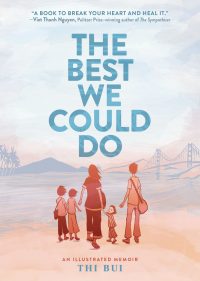 My current dream project is to translate Thi Bui’s award-winning graphic novel The Best We Could Do into Swedish. Starting this fall, I will be initiating a translation-based social practice art project, working with “newcomers” to Sweden who are enrolled in state-sponsored Swedish language acquisition programs. According to the Swedish Migration Agency, Sweden accepts the third largest number of refugees in the world, a ranking topped only by Canada and the United States, with the latter, as we know, currently limiting the number of refugees and immigrants as part of its racist and fascist domestic and foreign policies.
My current dream project is to translate Thi Bui’s award-winning graphic novel The Best We Could Do into Swedish. Starting this fall, I will be initiating a translation-based social practice art project, working with “newcomers” to Sweden who are enrolled in state-sponsored Swedish language acquisition programs. According to the Swedish Migration Agency, Sweden accepts the third largest number of refugees in the world, a ranking topped only by Canada and the United States, with the latter, as we know, currently limiting the number of refugees and immigrants as part of its racist and fascist domestic and foreign policies.
Sweden is not, however, a panacea within a chronic global crisis of displaced peoples. The Swedish political system, like most of its European counterparts, is confronting mobilized nativist and neo-Nazi movements, including the Sweden Democrats, the third-largest political party in the country, with deep roots in Sweden’s Nazi past. Meanwhile, the asylum “question” of how to humanely and sustainably accept (i.e. tolerate) refugees remains volatile and unresolved, highlighting how Swedes negotiate nativism vis-à-vis their stated commitments to the integrity of the welfare state.
The Swedish Migration Agency also states that the priority is to accept displaced peoples from Syria, with a clinical pie chart that distinguishes between “the Middle East”(40 percent in 2018) and “Asia” (6 percent in 2018). “Prioritized and urgent cases” (countries of origin not indicated) constitute 18 percent of the 5,000 slots for 2018. Behind the pie chart, refugees to Sweden are attempting to make new lives for themselves in the increasingly neoliberal lap of the welfare state, where the private corporations that profit from providing refugee housing are the same private corporations that manage elder housing and group homes.
I read The Best We Could Do and immediately knew that Thi’s book could provide a much-needed analysis, consolation, and critique within a non-U.S. context. It is undeniably a gorgeous and provocative work of art, but what stays with me long after I close the book is the story’s insistence that forgetting leads to both political and personal erasure. Survival depends on actively refusing to forget, on recognizing the act of remembering as a political strategy, as an intervention in the proliferation of simplistic and false narratives around nation and belonging. The U.S. war in Vietnam is, as many incredible Asian American studies scholars have pointed out, a crucial site for these historiographic lessons, yet its relevance in the present is often occluded.
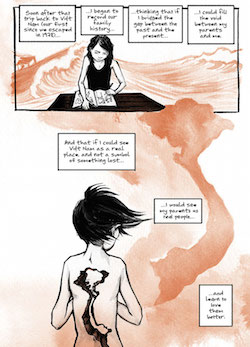 As a translator of color, my work depends on seeing myself simultaneously as an instrument and as an actor. The translations I produce must increasingly pass a kind of translator’s Bechdel test: are the author and main characters people of color? Is the story’s arc structured around experiences relevant to people of color and also critical of imperial histories as well as the fascist present? The field of translation so often reifies the passage of a text from one language to another across national borders, borders which are often artifacts of colonial and racial-capitalist histories. How can I as a translator set the stage for literary interventions in such racist national narratives? How can the translations I generate highlight rather than obscure the problematics of textual “transmission” between languages and nation-states? How is my nonwhite body—its nonwhite life—essential to my facility as a translator of a text by a nonwhite author? In this moment, as I have moved from one fascist political arena to another, my hope is that a Swedish translation of The Best We Could Do will enact the kind of indictments and interventions, consolations and critiques, that we need to remember and act, boldly.
As a translator of color, my work depends on seeing myself simultaneously as an instrument and as an actor. The translations I produce must increasingly pass a kind of translator’s Bechdel test: are the author and main characters people of color? Is the story’s arc structured around experiences relevant to people of color and also critical of imperial histories as well as the fascist present? The field of translation so often reifies the passage of a text from one language to another across national borders, borders which are often artifacts of colonial and racial-capitalist histories. How can I as a translator set the stage for literary interventions in such racist national narratives? How can the translations I generate highlight rather than obscure the problematics of textual “transmission” between languages and nation-states? How is my nonwhite body—its nonwhite life—essential to my facility as a translator of a text by a nonwhite author? In this moment, as I have moved from one fascist political arena to another, my hope is that a Swedish translation of The Best We Could Do will enact the kind of indictments and interventions, consolations and critiques, that we need to remember and act, boldly.
—Jennifer Hayashida
 “Barbara writes. And she tears to shreds. She carries on, she writes. And the other person, the one she likes to call (for the past few months now) her ‘enemy,’ tears up what she’s written. EVERYTHING THAT BARBARA MOLINARD HAS WRITTEN HAS BEEN TORN TO SHREDS.” This is how Marguerite Duras describes Barbara Molinard in her preface to Molinard’s book of short stories Viens, published by Éditions Mercure in 1969. Not much is known today of Barbara Molinard. Her only published book is now long out of print. A few of her stories were published in journals back in the 1960s but are now impossible to find. What we do know is that this woman’s writing captivated the great Marguerite Duras.
“Barbara writes. And she tears to shreds. She carries on, she writes. And the other person, the one she likes to call (for the past few months now) her ‘enemy,’ tears up what she’s written. EVERYTHING THAT BARBARA MOLINARD HAS WRITTEN HAS BEEN TORN TO SHREDS.” This is how Marguerite Duras describes Barbara Molinard in her preface to Molinard’s book of short stories Viens, published by Éditions Mercure in 1969. Not much is known today of Barbara Molinard. Her only published book is now long out of print. A few of her stories were published in journals back in the 1960s but are now impossible to find. What we do know is that this woman’s writing captivated the great Marguerite Duras.
Duras tells us that Molinard wrote in the same way for eight years, that she would go into writing frenzies, writing all day every day for months at a time, and then meticulously rip each of her pages into four pieces, stacking them up into a neat pile, staring at them for a certain amount of time. And then she would set fire to them.
Duras and Molinard’s husband convinced her to break from this vicious cycle, to turn her back on her “enemy” and bring her pages to a publisher. Impossible to say what, exactly, the stories in Viens are like. But from what I can gather, they describe the pain of her lived experience. Her existence in this world was very fragile. Duras claims the sight of a stranger’s face on the street could terrify her, incite her to run away, and she would be obsessed with that face for days to come.
I can only imagine how haunting and enticing the stories in Viens must be, and all the stories long ago ripped to shreds. I hope that one day Barbara Molinard’s work will resurface, this time in English.
—Emma Ramadan
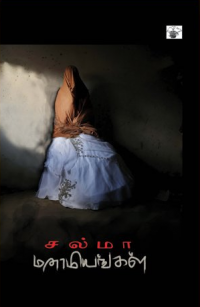 I often wonder what are the other lives I would pursue if I was not a writer, and I think translator is possibly among my top ten choices. I’m trying to do as much translation as I can, but it is a difficult balancing act. Often there are projects you cannot take up because you are not sure there will be a publisher at the end of your journey. Sometimes, even the end is not as hard as the middle—how will you sustain yourself for the months you spend working on a project? So, if there is a dearth of translation it is sometimes also deeply linked to questions of livelihood and survival. If I had something that would take care of the monthly rent and bills, these are the books by women that I would translate in the next decade.
I often wonder what are the other lives I would pursue if I was not a writer, and I think translator is possibly among my top ten choices. I’m trying to do as much translation as I can, but it is a difficult balancing act. Often there are projects you cannot take up because you are not sure there will be a publisher at the end of your journey. Sometimes, even the end is not as hard as the middle—how will you sustain yourself for the months you spend working on a project? So, if there is a dearth of translation it is sometimes also deeply linked to questions of livelihood and survival. If I had something that would take care of the monthly rent and bills, these are the books by women that I would translate in the next decade.
Akalam by S. Pushparani: This is the searing testimony of S. Pushparani, a Tamil woman who joined the armed struggle in Sri Lanka in the 1970s. Poignant and hard-hitting, she chronicles a political landscape defined by the absence of women, a state of ethnic oppression that pushed Tamil youth to voluntarily take up weapons, and the unspeakable horrors of police torture and prison life.
Among Tamil novelists from India, I’d give any number of my years if I got the opportunity to translate either P. Sivakami or Bama—they are Dalit women who write daringly, beautifully, powerfully. The caste hierarchy and patriarchy of Tamil society has not recognized their genius or their creativity to the true extent to which they should be celebrated. This is the case for all women, but women from the oppressed and marginalized sections of society are at the receiving end of erasure.
Malathi Maithri is a fierce poet and a personal friend, and I always tell her that when she has her next collection ready she must send it to me. That said, I’m presently working on a translation of Salma’s Manamiyangal and in some small way redressing what I think is a gap in the publication and representation of Tamil women writers.
—Meena Kandasamy
@meenakandasamy| kandasamy.co.uk
 Although I’ve been spending very real time in the last few years chipping away at translating Anni Baobei’s short stories, I still think of it as a dream project, largely because these stories can seem so far away from the type of literature in translation that tends to get published. Anni Baobei (安妮宝贝) is a pen name used by the Chinese writer Li Jie (励婕)(using another pen name Qing Shan (庆山) since 2014), whose bestselling books have sold millions of copies in China. She was born in 1974 at the tail end of the Cultural Revolution, during the start of a period of huge economic growth and industrialization. In 1998, at the beginning of the internet fiction trend, she began publishing her stories on the site Rongshuxia (榕树下). My translations focus on these short internet fiction pieces mostly written in the late 1990s and early 2000s. Three of her stories were translated into English by Nicky Harman and published by the small press Make-Do Publishing in the UK in 2012, but for the most part, in the Anglo-American world, she’s completely under-read.
Although I’ve been spending very real time in the last few years chipping away at translating Anni Baobei’s short stories, I still think of it as a dream project, largely because these stories can seem so far away from the type of literature in translation that tends to get published. Anni Baobei (安妮宝贝) is a pen name used by the Chinese writer Li Jie (励婕)(using another pen name Qing Shan (庆山) since 2014), whose bestselling books have sold millions of copies in China. She was born in 1974 at the tail end of the Cultural Revolution, during the start of a period of huge economic growth and industrialization. In 1998, at the beginning of the internet fiction trend, she began publishing her stories on the site Rongshuxia (榕树下). My translations focus on these short internet fiction pieces mostly written in the late 1990s and early 2000s. Three of her stories were translated into English by Nicky Harman and published by the small press Make-Do Publishing in the UK in 2012, but for the most part, in the Anglo-American world, she’s completely under-read.
 I feel a bit protective of her work, a bit worried that her fiction might be written off as full of cheesy gestures, melodramatic, overly sentimental, even angsty or emo, writing that the Anglo-American reader might equate with a sort of diaristic coming-of-age story. But in many ways, these stories make a strong political statement, a lot of them focus on very isolated young men and women, who have very isolated and alienated lives in big cities like Shanghai. They are the first generation to do so, and are caught somewhere between traditionality and these burgeoning capitalist explosions happening in the cities as the country enters the market economy—the percentage of the population living in urban centers just about doubled from around 1980 to the early 2000s. I feel like this was a pretty radical thing, this prioritizing in her very public stories of the private and interior emotional experience of individuals, many of them young women.
I feel a bit protective of her work, a bit worried that her fiction might be written off as full of cheesy gestures, melodramatic, overly sentimental, even angsty or emo, writing that the Anglo-American reader might equate with a sort of diaristic coming-of-age story. But in many ways, these stories make a strong political statement, a lot of them focus on very isolated young men and women, who have very isolated and alienated lives in big cities like Shanghai. They are the first generation to do so, and are caught somewhere between traditionality and these burgeoning capitalist explosions happening in the cities as the country enters the market economy—the percentage of the population living in urban centers just about doubled from around 1980 to the early 2000s. I feel like this was a pretty radical thing, this prioritizing in her very public stories of the private and interior emotional experience of individuals, many of them young women.
Another dream project, that I’ve started and am always trying to return to, is translating Violette Leduc’s last novel, Le Taxi (Gallimard, 1971), from the French. Leduc writes a lot about alienation and ugliness but also, in this very short novel written entirely in dialogue, there is a lot of lyricism and beauty and freshness—an unrelenting adherence to innocence and discovery and the pleasures of sexual awakening—to the somewhat lurid-seeming premise of a brother and sister engaged in a sexual escapade in the back of a taxi driving around Paris. There was a translation into English by Helen Weaver which was published by FSG in 1972, but it’s out of print and feels a bit stiff and off-tune to me, so I’ve been working on it in the hopes of giving it new life, a new perspective!
—Bonnie Chau
 The work of Japanese proto-feminist bluestocking Toshiko Tamura greatly deserves to be revisited and translated into English. Active from the 1910s until her death in 1945, Tamura emerged from the fringes of the safe spaces that were women’s writing circles to become a best-selling author and a peripatetic woman of the world whose fiction occasionally captured the lost illusions of women forced to reconcile their modern dreams with a backwards social reality.
The work of Japanese proto-feminist bluestocking Toshiko Tamura greatly deserves to be revisited and translated into English. Active from the 1910s until her death in 1945, Tamura emerged from the fringes of the safe spaces that were women’s writing circles to become a best-selling author and a peripatetic woman of the world whose fiction occasionally captured the lost illusions of women forced to reconcile their modern dreams with a backwards social reality.
Her prizewinning Resignation (1911) is the story of a young woman writer who is unable to elude the rigid social system that obligates her to a life of servitude as a caregiver—vis-à-vis the intellectual life and financial independence promised by her education and literacy. The woman writer’s struggle is a recurring theme in Tamura’s work, and one that situates her within the modernist vanguard. (To put it in perspective, “A Room of One’s Own” was published in 1929.) In Japan, the phenomenon known as the New Woman was born, and its silent menace was evoked in images of male masochism such as Katai Tayama’s “The Quilt” (1907)—whose title is derived from a scene in which a literary man, ensconced in a conservative marriage and a teaching career, yet consumed by sexual jealousy over his female protégé, sobs into a blanket—and Junichiro Tanizaki’s Naomi (1924), where one man’s obsession with cultivating Westernized attitudes and tastes in an ingenue of his liking proves to be a slippery slope that descends into his own utter powerlessness.
In this vein is Tamura’s novel Lipstick on a Mummy (1913), the unflinching portrait of a husband-and-wife pair of writers facing the worst of times—financial instability, the scathing pen of critics, and competition against one another. The husband’s reputation suffers when his work is denounced as staid and dull, his supportive wife steps out from his shadow in an attempt to become the breadwinner, and violent tensions ensue. The couple appear as mummies in her dreams—as if to hint that when literary and marital institutions are fraught with problems, the sexes are equally doomed.
—Bonnie Huie
 Parijat, a night flowering jasmine, is the pseudonym of Bishnu Kumari Waiba, the only female writer canonized in Nepali literature. Born in Darjeeling, India, in 1937, Parijat moved to Kathmandu in 1954 where she lived until her death in 1993. In her mid-20s, she suffered partial paralysis and her sister took care of her for most of her life. She was prolific (10 novels, 4 short-story collections, 3 books of poetry, 3 essay collections, plays) and rose to fame as a modernist, leftist, feminist, atheist and highly unsentimental writer. She died having never married and without children—two ways Nepali women are never to be.
Parijat, a night flowering jasmine, is the pseudonym of Bishnu Kumari Waiba, the only female writer canonized in Nepali literature. Born in Darjeeling, India, in 1937, Parijat moved to Kathmandu in 1954 where she lived until her death in 1993. In her mid-20s, she suffered partial paralysis and her sister took care of her for most of her life. She was prolific (10 novels, 4 short-story collections, 3 books of poetry, 3 essay collections, plays) and rose to fame as a modernist, leftist, feminist, atheist and highly unsentimental writer. She died having never married and without children—two ways Nepali women are never to be.
I grew up in Singapore, where my family lived in a gated community of Nepalis: the men served as Gurkha soldiers, and the women cooked for the family and played badminton in the evenings. At home, we spoke a mixture of Gurung and Nepali, but sang songs in Hindi. At school, the Nepali children were assigned to Malay for “mother tongue” classes. When my Baba retired in 1994 and we moved back to Nepal, people laughed at my Nepali.
In grade six, I learned Nepali from scratch.
Throughout high-school, I would hate Nepali class; the literature was male, inaccessible, and uninviting.
But then I met Parijat in New York City. I was trying to reconnect with the Nepali language and found her in the stacks at Columbia University’s Butler Library. With my index finger, I traced my way through her story “Maile Najanmayeko Choro,” in which a woman sits by the window watching a young teenage boy, and claims him as her son. In the story, she speaks boldly against marriage but desires sex and children. I had never read anything like that expressed in the Nepali language before; I didn’t know our language could even do that!
I began to translate a few of Parijat’s poems and short stories in an effort to get to know her. Although many people—Nepalis and non-Nepalis—know her name, and young Nepalis wear her face and invoke her like they do Che Guevara, I find that very few have actually read her. The way Parijat de-genders the Nepali language, the way she names, the way she writes in the “I” with such ease and confidence through her male protagonists, the way the women are seen and shown—in her work there is a queering of Nepali literature that is clear and cryptic, powerful and important, overlooked and relevant both today and in the time when she wrote. I’d like to translate one of her book-length works.
—Muna Gurung

